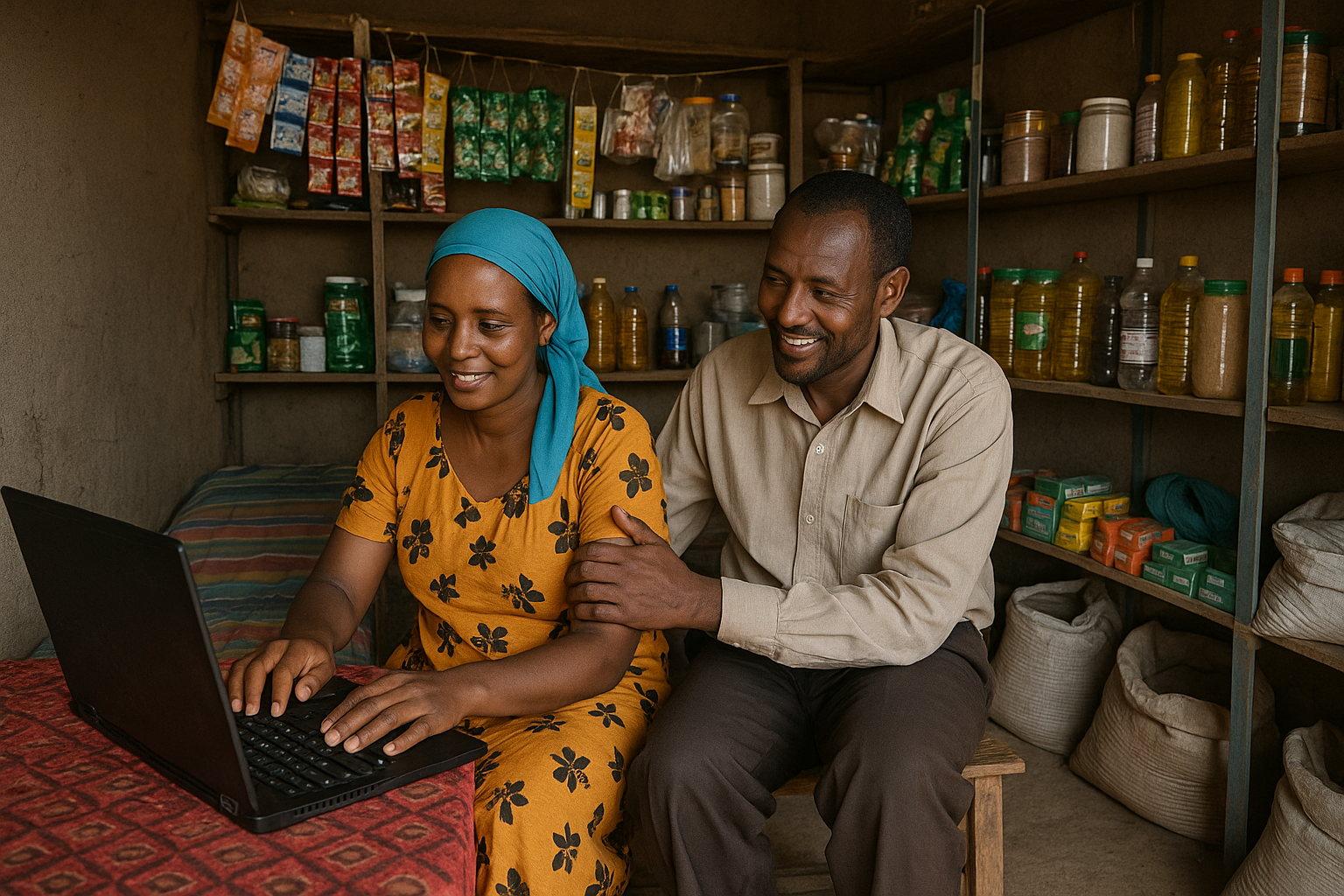Empowering Women Entrepreneurs: How Couples Training Transformed Ethiopian Homes
A World Bank study in Ethiopia found that involving husbands in women’s entrepreneurship training significantly boosted business outcomes and agency, especially for less profitable women entrepreneurs. The couples-based approach improved communication, reduced household resistance, and empowered women without increasing marital conflict.

In a pioneering effort to dismantle the gender gap in entrepreneurship in Ethiopia, researchers from the World Bank’s Africa Gender Innovation Lab, in collaboration with the Digital Opportunity Trust (DOT), undertook a rigorous study titled “Conscious Coupling: Impact of a Skills Intervention to Address Intrahousehold Constraints for Women Entrepreneurs in Ethiopia.” Backed by Global Affairs Canada and the World Bank Umbrella Fund for Gender Equality, the study aimed to determine whether entrepreneurial training programs that engage husbands alongside their wives can improve women’s business outcomes and empower them within their households. Using a randomized controlled trial involving 973 married women across Addis Ababa, Bahir Dar, and Hawassa, combined with in-depth qualitative interviews, the research offers new insights into the role of household dynamics in shaping economic outcomes.
Couples Training: A Novel Experiment in Business Coaching
The intervention was built around the ScaleUp! business training program, a six-month course designed to equip women with both business and socioemotional skills. A groundbreaking addition to the traditional training was a “couples component,” delivered through three home-based sessions that invited husbands to participate in structured discussions about communication, empathy, and shared goals. In this model, the woman remained the key decision-maker for her business, while her spouse was encouraged to act as a collaborative consultant. The sessions were designed to break down entrenched gender norms and foster supportive household environments where women’s businesses could thrive.
Striking Results for Women with Less Profitable Enterprises
The results varied significantly depending on the profitability of the women's businesses at baseline. While the average effects across all participants were modest, a dramatic uplift was observed among women who had lower-than-median profits at the start of the program. For this group, participating in the couples-based training (T2) resulted in more than a 50% increase in both profits and revenues. These women also reported stronger interpersonal skills, particularly in assertive communication and negotiation, critical tools for managing time and resources in business and at home. Importantly, these improvements were achieved without increasing marital conflict. Women in the T2 group were able to negotiate for more time to focus on their businesses, underscoring the power of communication in redistributing household labor without explicit confrontation.
Redefining Decision-Making and Economic Agency
The intervention had a clear impact on women’s autonomy in business. Participants in both the individual (T1) and couples (T2) trainings were significantly more likely, by about 10 percentage points, to report that they made business decisions independently. This marks a major shift in household power dynamics, particularly for women who were previously required to defer to their husbands. For the T2 group, this change reflected a transformation in household norms, with husbands becoming less obstructive even if they did not take on additional business or domestic tasks. Interestingly, while husbands did not necessarily increase their direct support in their wives’ enterprises, their reduced interference allowed women the freedom to pursue growth on their own terms.
Every Relationship Tells a Different Story
Qualitative interviews added rich context to the data. Mahlet, who previously prioritized her husband’s transport business over her own tailoring venture, emerged from the training with renewed focus and assertiveness, gradually shifting household priorities in favor of her work. Abeba, already in a supportive marriage, used the training to reinforce a well-functioning partnership that continued to propel her boutique and distribution business. Hawa, who operated a small grocery under financial strain while her husband’s carpentry business declined, saw limited economic gains but deepened her husband's investment in her success. These case studies reveal that the intervention’s effectiveness depends heavily on pre-existing relational dynamics, with women in less equitable households often having the most to gain.
Time, Credit, and the Quiet Revolution at Home
Time-use data revealed another subtle but critical outcome: women trained with their husbands reported spending more hours on paid work without reducing their time spent on household chores. This reflects a successful renegotiation of roles within the household, one that empowered women without triggering backlash. Additionally, women in the T2 group with more profitable businesses were more likely to secure loans from formal institutions, while those with lower profits reported increased savings. These gains in financial autonomy and capital access hint at longer-term transformations that can support sustained business growth.
The study demonstrates that entrepreneurship training for women is most effective when it incorporates the household as a unit of economic decision-making. By consciously including husbands in the process, the program fostered empathy, improved communication, and allowed women to assert their priorities more effectively. The study’s most profound takeaway is that progress is not always explosive; it often begins with quiet, incremental shifts in how couples talk, share responsibilities, and value each other’s ambitions. For many Ethiopian women, those small changes open the door to bigger futures.
- READ MORE ON:
- Ethiopia
- World Bank
- Gender Equality
- couples-based training
- FIRST PUBLISHED IN:
- Devdiscourse










